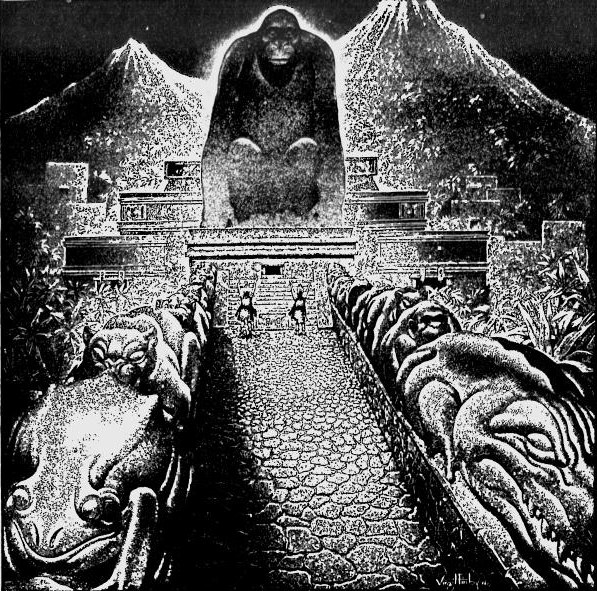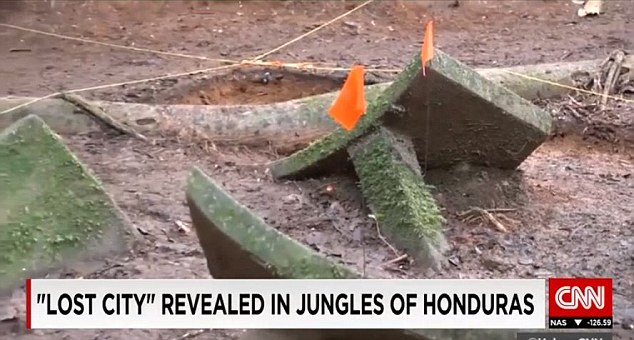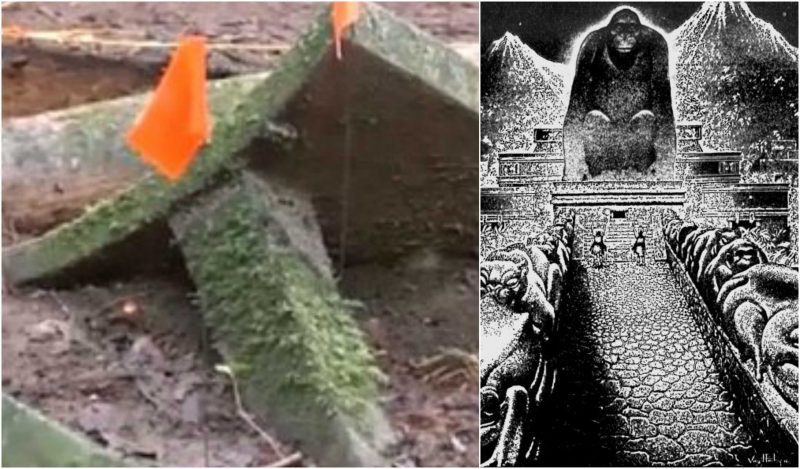Excavations have begun at a mysterious site on the Caribbean coast of Honduras. This site is believed by archaeologists to be the lost city of Ciudad Blanca, or White City.
The site had been undisturbed for years until last year, when a team from National Geographic unearthed the mounds of white rubble in the shape of a monkey’s skull. There is a rumor that the site had supposedly been located and then lost sometime between the 1500s and 1800s. The ruins have been dated between 1,000 and 1,500 AD, and they appear to not be from the Mayans, whose culture dominated the region. According to Virgilio Paredes, the director of the Honduras’ Institute of Anthropology and Colorado, “It is a new culture, or a different culture.”

The site, which is in the Mosquitia region, has given up other artifacts. The majority of the artifacts – more than five dozen items, to be precise – are stone and ceramic fragments. There have been a few more stunning discoveries – the mostly intact vessel that has vulture-shaped handles, a tray with a jaguar’s head made from clay, and a stone-hewed throne decorated with another jaguar. Those three artifacts are thought to be a part of a ceremonial temple. Other fragments bore decorations that represented humans, jaguars, buzzards, lizards, and birds.
One artifact, a jaguar-like head that has yet to be fully unearthed, has especially captured the interest of the archaeologists. Some believe that the jaguar represented a shaman during a transformed, spiritual state. Alternately, it could be related to ritualized ball games that were a feature of pre-Columbian life in Mesoamerica.
The city’s name, Ciudad Blanca (the White City), is believed to stem from the white limestone rock that is found in the area, or possibly after the ancient texts that described ivory temples filled with mounds of treasures.
The first reference to the White City that has been found outside of the Caribbean is from the conquistador Hernando Cortes. In his fifth letter to King Charles V of Spain in 1526, Cortes wrote that the city will “exceed Mexico in riches”. The next written reference of the White City came in 1544, in a document written by Spanish Bishop Cristobal de Pedraza. More recently, in 1940, Theodore Morde suggested that the city was known as the White City of the Monkey God. Morde, an adventurer, saw in the city the remains of an ancient civilization’s worship of a giant simian deity, symbolized by a statue.
Writing of his adventures in the U.S. magazine The American Weekly, Morde said that he had been told by local people of the monkey-worshiping civilization. They told him of more outlandish stories of a monkey from the city that kidnapped a local woman and bred half-human, half-chimp offspring. Those half-breed children were apparently then hunted for revenge. Although the discovery of the White City was a shock to archaeologists, the local indigenous groups, the Pech and Payas, had long spoken of such a site.
During his visit of the site, the Honduran President Juan Orland Hernandez said, “We are blessed to be alive at such a special time in Honduran history.” The discovery does not only affect the archaeological world, but also the country itself, as Hernandez is very aware. “This discovery has created a lot of excitement because of its significance for Honduras and the world.”
The work ahead of the archaeologists will be arduous. Ramon Espinoza, the Honduras’ Minister of Science, said, “There will be further research to gather more data, because there is no other site in central America with a lost civilization.”

Douglas Preston, one of the National Geographic team, wrote, “The tops of 52 artifacts were peeking from the earth. Many more evidently lie below ground, with possible burials.”
This site could very well be the city that Cortes described in his letters to King Charles V. Historians believe that Cortes’ description matches that of the Mosquitia region. As it was in Cortes’ day, the region is dangerously impenetrable. Yet, the possibility of rewards is as luring to modern adventurers as it was to Cortes.
“…I have trustworthy reports of very extensive and rich provinces,” he wrote, “and of powerful chiefs ruling over them, and of one in particular, called Hueitapalan, and in another dialect Xucutaco, about which I possessed information six years since, having all this time made inquiries about it, and ascertained that it lies eight or ten days’ march from that town of Trujillo, or rather between fifty and sixty leagues. So wonderful are the reports about this particular province, that even allowing largely for exaggeration, it will exceed Mexico in riches, and equal it in the largeness of its towns and villages, the density of its population, and the policy of its inhabitants.”
